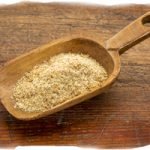If you know anything about commercial chicken production in the US or you’ve seen the stomach-turning film, Food, Inc., you’ll certainly be inclined to wash your raw chicken before sticking it in the oven. After all, as one featured Perdue farmer in the film, Carole Morison, says, “It is nasty in [the chicken coop]; there’s dust flying everywhere….there’s feces everywhere…” She then goes on to show collapsed dead chickens rotting next to the chickens going to market. After seeing that and hearing her testimony, who wouldn’t want to give the bird a bath? In fact, most chefs have long advocated washing raw chicken before dressing it. Open virtually any recipe book to the poultry section, and there you’ll get the order to run that chicken under the sink. Pollsters say that 90 percent of home cooks do just that.
Now, though, scientists are getting the word out that washing the bird might put your healthy immune system at risk. In fact, a group out of Drexel University has launched a “Don’t Wash Your Chicken” campaign, setting up a website full of videos making the point.1 Drexel University. “Don’t Wash Your Chicken.” Drexel University. (Accessed 29 Aug 2013.) http://drexel.edu/dontwashyourchicken/ Counter-intuitive though it seems, it turns out that washing the chicken won’t necessarily dislodge all of the bacteria clinging to the bird. Plus, it certainly won’t kill the bacteria, because faucet water isn’t hot enough to do so. But the big problem is that if washing the chicken does shake loose bacteria, the water running over the bird can spread those bacteria all around the kitchen. You don’t have to make a wet mess for this to be a problem. Running the bird under water at all creates droplets and mist that the bacteria travel in. That bacteria-laden mist then settles on all available surfaces within up to five feet. For a visual display of how this works, check out this video from the Drexel University campaign.
Chicken is notorious for hosting nasty bacteria like salmonella and Campylobacter, the two leading causes of foodborne illness. Together, these two strains cause about 1.9 million instances of illness a year. Campylobacter bacteria has a particular affinity for birds, meaning that chicken is one of the primary purveyors of the associated disease. Campylobacter causes about 1.3 million illnesses annually, with symptoms including fever, diarrhea, abdominal pain and cramping that lasts about a week. It can get quite serious, causing arthritis and paralysis, and even become life-threatening in immune-compromised people. And remember, these are reported cases. The real number probably is lots higher, because many people assume they have a “stomach bug” rather than foodborne illness when they have intestinal distress, and not all go to the doctor.
In fact, the USDA issued recommendations years ago urging consumers not to wash poultry, and research by the UK Food Standards Agency has confirmed the fact that washing chicken spreads germs, but kitchen gods like James Beard, Martha Stewart, and Julia Child eschewed that advice and home cooks followed suit.2 “Washing Chicken May Spread Bacteria Around Kitchens.” Holiday Food Safety Information Sheet. 30 August 2013. http://www.ces.ncsu.edu/wp-content/uploads/2012/11/Holiday-foodsafetyinfosheet-2NC.pdf According to the USDA, the only way to be certain that all the bacteria has been killed is to be certain to cook your chicken all the way through.
“Using a food thermometer is the only sure way of knowing if your food has reached a high enough temperature to destroy foodborne bacteria.” says an agency publication. The thermometer should read at least 180 degrees in the thigh to indicate the chicken is cooked.
You really do need to heed these guidelines, because the percentage of chicken contaminated by harmful bacteria is off the charts. Consumers Reports found in 2009 that two-thirds of all chickens on supermarket shelves at 100 stores throughout the US hosted either salmonella, campylobacter, or both.3 Mertens, Maggie. “Tests Find Chicken Often Contaminated, but Better Than Before.” 30 November 2009. NPR. 30 August 2013. http://www.npr.org/blogs/health/2009/11/how_clean_is_your_chicken_prob.html And last year, the Physician’s Committee for Responsible Medicine found that 48 percent of all chickens in their samples–consisting of 128 chickens purchased in 10 cities nationwide–tested positive for E. coli.4 Strom, Stephanie. “48% of Chicken in Small Sample Had e. Coli.” 11 April 2012. New York Times. 30 August 2012. http://www.nytimes.com/2012/04/12/health/in-small-sample-e-coli-found-in-48-of-chicken-in-stores.html
What about soaking chicken in salt water to clean it? That serves no purpose in terms of safety, and the sodium just might drive your blood pressure through the roof. Again, the only way to get rid of the bacteria for sure is to cook the bird until done.
By the way, the same rules apply to washing pork, another popular meat that’s loaded with the harmful bacteria.5 Oaklander, Mandy. “Don’t Wash Your Chicken.” Prevention. 30 August 2013. http://www.prevention.com/food/healthy-eating-tips/dont-wash-your-chicken In fact, it’s unnecessary and potentially harmful to wash any meat or fish. If the product seems slimy or unsavory, it’s probably going bad and neither washing nor cooking will cure that. The best course of action is to toss it into the trash right away. As for meat that comes from the market already cooked, like deli meats, note that it may have picked up bacteria in the packaging process. In fact, 85 percent of the listeria cases recorded each year come from cold cuts and cheeses–and about 15 percent of the victims die.6 Simbra, Maria. “Lunch Meat Could Be Source for Bacterial Infection.” 5 May 2011. CBS Pittsburgh. 30 August 2013. http://pittsburgh.cbslocal.com/2011/05/05/cold-lunch-meat-could-be-source-for-bacterial-infection/ Given that reality, some experts recommend cooking cold cuts before making your sandwich, just to be sure–in other words, transforming cold cuts into hot cuts. On the other hand, given the high sodium and preservative content in cold cuts, why eat them at all?
It does still make sense to wash vegetables and fruits to remove bugs, dirt, and pesticide residues. As with meats, though, washing won’t remove listeria or E.coli–only cooking will do that. (And if the contamination came from the water used in irrigating the produce, the E. coli would actually be “inside” the produce, and not just on its surface) If you appreciate raw vegetables and fruits within your balanced diet and want the health advantages that come with raw foods, the best advice is to buy organic produce from a known purveyor–and pray.
References
| ↑1 | Drexel University. “Don’t Wash Your Chicken.” Drexel University. (Accessed 29 Aug 2013.) http://drexel.edu/dontwashyourchicken/ |
|---|---|
| ↑2 | “Washing Chicken May Spread Bacteria Around Kitchens.” Holiday Food Safety Information Sheet. 30 August 2013. http://www.ces.ncsu.edu/wp-content/uploads/2012/11/Holiday-foodsafetyinfosheet-2NC.pdf |
| ↑3 | Mertens, Maggie. “Tests Find Chicken Often Contaminated, but Better Than Before.” 30 November 2009. NPR. 30 August 2013. http://www.npr.org/blogs/health/2009/11/how_clean_is_your_chicken_prob.html |
| ↑4 | Strom, Stephanie. “48% of Chicken in Small Sample Had e. Coli.” 11 April 2012. New York Times. 30 August 2012. http://www.nytimes.com/2012/04/12/health/in-small-sample-e-coli-found-in-48-of-chicken-in-stores.html |
| ↑5 | Oaklander, Mandy. “Don’t Wash Your Chicken.” Prevention. 30 August 2013. http://www.prevention.com/food/healthy-eating-tips/dont-wash-your-chicken |
| ↑6 | Simbra, Maria. “Lunch Meat Could Be Source for Bacterial Infection.” 5 May 2011. CBS Pittsburgh. 30 August 2013. http://pittsburgh.cbslocal.com/2011/05/05/cold-lunch-meat-could-be-source-for-bacterial-infection/ |












Are these two bacterias,
Are these two bacterias, salmonella and Campylobacter, only on the surface or is it in the meat? The article says the only way to kill it is by heating it to a certain temp which makes me think that it’s in the meat. If it’s just on the surface, what about a mild vinegar solution, then rinsing that off? Vinegar kills several kinds of bacteria.
Food grade vinegar contains
Food grade vinegar contains about 5 percent acetic acid, which does have antimicrobial properties. And studies have shown that at that concentration the acetic acid can inhibit the growth of some strains of E. coli. But in terms of how much of the germs are killed and how much are left behind, the studies are vague. If you diluted the vinegar with water, it would be even less effective. On a guess, you would probably at least need to let the chicken marinate in undiluted vinegar for some time to substantially kill of the bacteria. Simply washing or dipping the chicken in a vinegar/water solution is unlikely to do the trick.